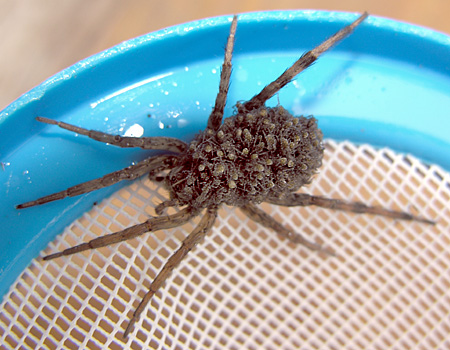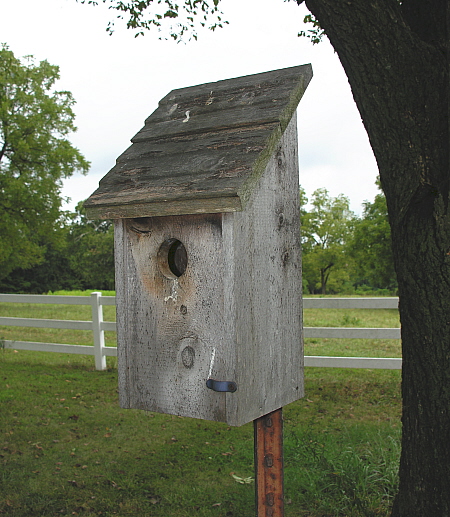
We have six well-established Eastern Bluebird nesting boxes spaced around our house, and it is a pleasure to be able to watch these wonderful birds go about their business. Since the six boxes around the house have been well used, I thought it might be a fine idea to establish a trail of bluebird nesting boxes along some of the paths we hike along throughout our property. I figure we might ultimately put up over 100 nesting boxes over time, so I decided to build a few prototypes first, to work out the kinks and help select a decent design that was reasonably inexpensive and easy to build.
We currently have two types of established nesting boxes. The nesting box shown above is designed so that the front panel opens for cleaning, while the type shown below has a hinged roof, to allow access from the top.
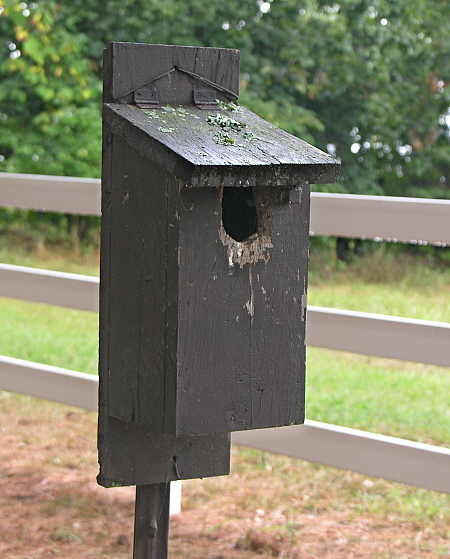
But which style to use for my little project?Â
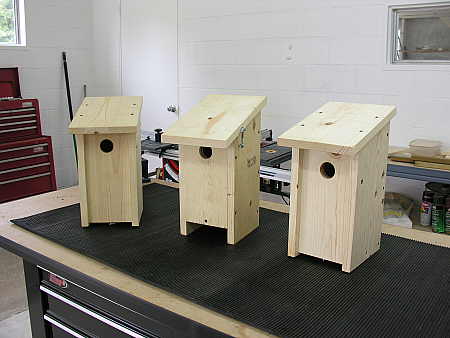
Above are three prototypes that I built to help decide on a final nesting box design. Two are front-opening, while one is top-opening.
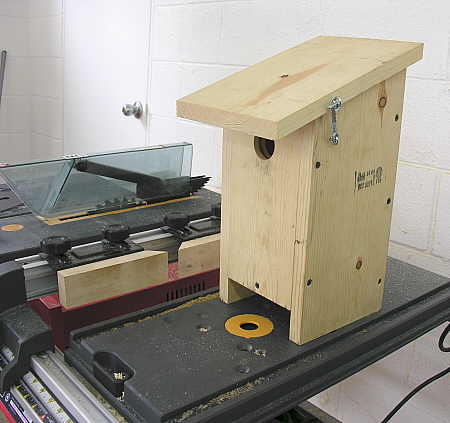
The top-opening nesting box (shown above) uses a section of piano hinge at the back of the lid, and is secured shut by a locking gate hook.  It was easy to cut and assemble, and it is reasonably decent looking (for a bird house in the woods). The disadvantage of a top-opening nesting box becomes clear when it becomes time to clean it out.  Look at the following design to see why.
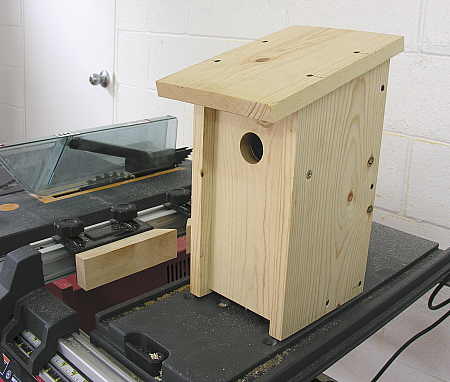
This is a front-opening nesting box. Rather than having the roof swing up for cleaning, the front panel pivots at the top, and is secured at the bottom.
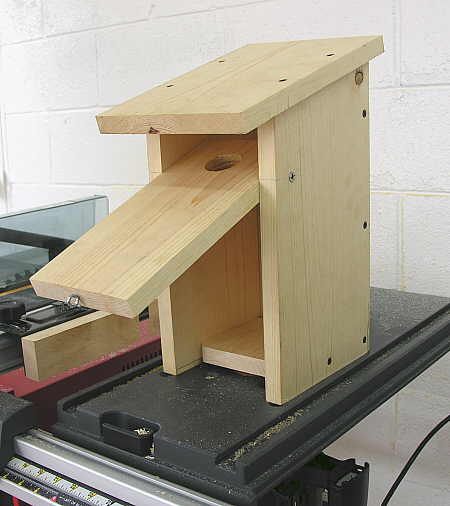
When the front panel is unlatched and swung open, as shown above, it is quite easy to simply “sweep” the nest debris out of the box. With a top-hinged design, cleaning requires you to lift the mess out of the box for disposal, which isn’t the most pleasant of tasks.
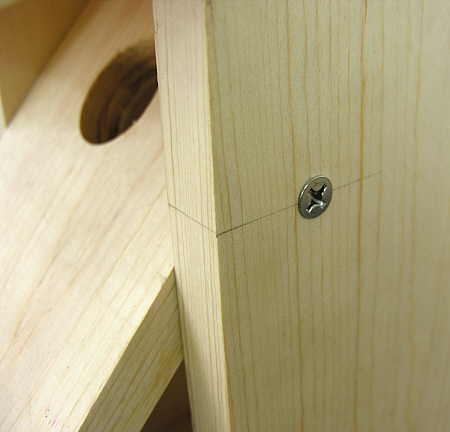
The way that the front panel pivots is very simple. It merely consists of a large wood screw on either side of the nesting box.
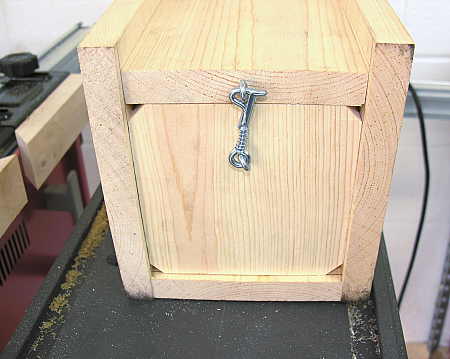
You can see the locking gate hook that secures the front panel shut in this underside view of the nesting box. Also, notice the drainage/ventilation gaps at the four corners of the floor.
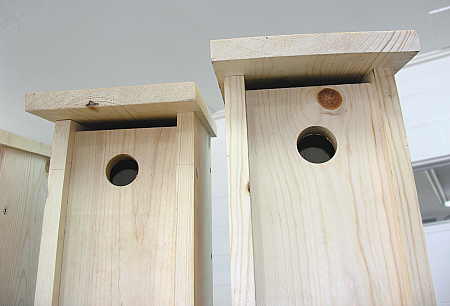
The length of the front panel is cut short enough to leave a ventilation gap at the top of the nesting box, as you can see here.
Because of the ease with which the front-opening box can be cleaned, and because it is quicker, cheaper, and easier to build than the top-hinged style, I have decided to go with the front-opening prototype.
I’m still debating about the type of wood, however. Treated lumber is out of the question for this application, so cedar would probably be the most durable, as it is resistant to rotting. The stumbling block is the cost. I can buy pine for 1/3 the cost of cedar, so I am inclined to use it, as I have for these prototypes. If I were just building a few nest boxes, then I wouldn’t hesitate, but for the number I want to build, the cost differential between pine and cedar is significant.
Decisions, decisions, decisions.



